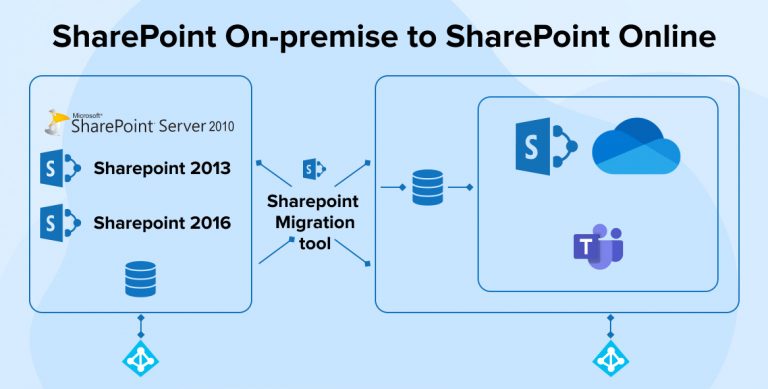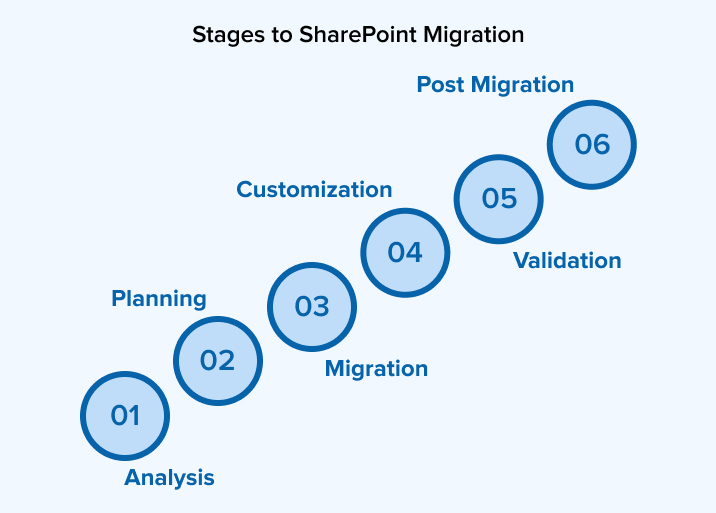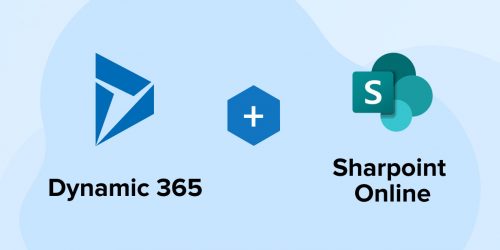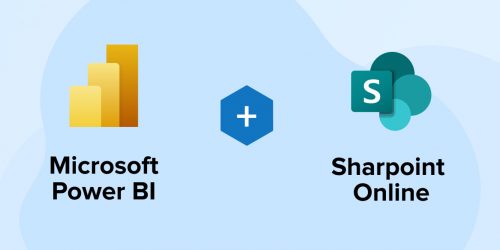Related Blogs
Table of Content

Businesses are prone to look for profits before making an investment on any new technology or services. When it comes to Cloud and its services, they offer massive benefits through its services and packages. Microsoft brought a shift in its service offering with the introduction to Office 365. Office 365 is an all-inclusive package of necessary features for business centric users combined all-together in a single tool – to simplify the usage and boost time invested in these processes. Right from scheduler, mail, planner to power apps- almost all the essential features are covered in the latest update.
Undoubtedly, SharePoint never lags behind when it comes to adding new functionalities and features. Office 365 in its new update came up with an online feature in SharePoint in which the organizational SharePoint site can be accessed from anywhere without any hardware or device barriers.

SharePoint online solution has a proven track record of exceptional results with guaranteed 99.99% site uptime, improved accessibility with improved mobile experience and enhanced security & compliance benefits. Perks of these services don’t end up here, there are many more. Although there are additional expenses to purchase license/ subscription plans per user in return it nullifies manpower hardware and maintenance cost with high security of Microsoft solution updates. This new upgrades and features offers bug fixing and everlasting extensible support to all software.
Logical Phases of SharePoint Migration
In Sharepoint the migration doesn’t start directly on its own. SharePoint developers have to analyze on-premise sites and environment in depth in order to implement sharePoint services. Fundamental attributes need to be examined in-depth and then SharePoint Migration phase cycle can be initiated for processes such as migration of number of sites and subsites , the content migration with customized features needed to be redeveloped, 3rd party tools used are licensed/ unlicensed, etc.
Most of the time, SharePoint consultants cover up about this process during initial meetings. For migrating on premise SPS 2003/ MOSS 2007/ SharePoint 2010/ SharePoint 2013/ SharePoint 2016 internal SharePoint Migration development is not mandatory, direct migration of each SharePoint version to Office 365 is also achievable. Let’s briefly describe each logical phase for migrating solutions.
Read more about Things to keep in mind when migrating from SharePoint on premises to Office 365

1. Analysis
In the process of evaluating sites, bulk web content needs to be migrated with a tinge of customization, branding, user mapping, permissions, other complexities and dependencies in on-premise SharePoint development compared to SharePoint online environment. SharePoint Consultants analyse the scope of migration at the initial stage and further, based on this analysis, they prepare a documentation with the key points of the migration process. This Migration process can be further bifurcated into two parts Pilot and Actual migration based on the client requirements.
2. Planning
Strategies are defined in this stage for the actual Migration. Sites that need to be migrated, deleted and archived are classified based on key-points of documentation prepared in the Analysis phase. Decide Migration timeline & throughput, downtime of SharePoint sites and 3rd Party tools based on client requirement. Migrating features are set as per the targeted Office 365 subscription plan.
3. Migration
Resources and various other tools like ShareGate, Metalogix, Metavis, AvePoint and many more tools are used for migrating content, pages and sites. For a certain span of time, this on-premise site is switched to read-only mode for accurate data migration. Each site or subsite that is to be migrated needs to be tested for assurance from the Online site is also identical to on-premise site.
4. Customization
To continue with all the existing features or with a need to add up new features, the code needs to be customized and made compatible with the existing version. In this phase, the deprecated features are altered and new migrated applications are enhanced and rebranded identically with requirements. Third Party integration like News Feed, Social Media integration and others are also seamlessly integrated in this phase.
5.Validation
Each migrated and customized feature is validated w.r.t key points of documentation created in the Analysis phase. Navigation and Search functionality of the application is precisely verified by the SharePoint Consultants to ensure that they portray the expected results on the new SharePoint Online environment. With subsequent User Acceptance criteria confirmation, the migrated solution is deemed for production deployment.
6. Post Migration
After validating and verifying the migrated applications, it is time for final stage release and the preceding steps, in final phase are Post Migration replaces metadata information with deployment scripts to deploy it on production servers and clean up test data. SharePoint online site is then deployed. With subsequent User Acceptance criteria confirmation like review content by site owner to assure smooth transition, the migrated solution is deemed for production deployment.
Migration, Customization and Validation are reversible stages in Sharepoint development as per the requirements. Initial examination in SharePoint Migration Consultancy is the crucial part – Any Error in it leads to Reproduction. So, it is recommended to consult the best SharePoint Development Company in industries with ample experience in migration projects.
SharePoint Hybrid
Aren’t you amazed to hear that Sharepoint behaves Hybrid and that too while migrating from on-premise to Cloud platform. Well, that is true. To stay reserved with sensitive and secured content, an organization can now easily opt for a SharePoint Hybrid solution where Sharepoint developers can store confidential data On-Premise while other collaboration data is stored on Cloud. Precisely, SharePoint Hybrid is a blend of SharePoint 2013/ 2016 and SharePoint Online.
Conclusion
Businesses are on a journey to align Sharepoint development and Migration services in their existing business system. There is so much that Sharepoint development services can offer to businesses like enhanced productivity and agility in all their business processes and workflows. SharePoint development is not restricted to one industry, its usage has spanned across various domains and companies. So while the global business leverages the tools of SharePoint development, why not your business increase their productivity cycle too?

Shital Patel
Shital Patel is VP at TatvaSoft with a high-level of proficiency and technical precision in SharePoint Development. His experience of the last two decades has helped businesses to solve complex challenges resulting in growth and performance of Startups to Fortune 500 companies.
Subscribe to our Newsletter
Signup for our newsletter and join 2700+ global business executives and technology experts to receive handpicked industry insights and latest news
Build your Team
Want to Hire Skilled Developers?




Comments
Leave a message...